Subscribe to our ▶️ YouTube channel 🔴 for the latest videos, updates, and tips.
5th Grade Bar Graph
We learn how to represent the data on the bar graph.
Bar graphs are one of the many methods used to present data in a visual form. Bar graphs usually present data grouped in intervals, which depicts the frequencies of values in a particular interval.
Data can be represented by bars (like rectangle) whose lengths represent numerical values. One can use horizontal or vertical bars. Instead of rectangles one way even use line segments in such graphs.
We can also represent data pictorically with the help of a bar graph. To draw a bar graph, we need two lines-one horizontal line and the other vertical line. It also consists of vertical or horizontal bars, the length of these bars depend on the amount or quantities that are to be represented. There should be equal intervals between the numbers written on both vertical as well as on the horizontal lines. A bar graph has title and a scale. Bar graphs make it easy to compare the recorded data. Let us read a bar graph.
Definition of Bar Graph:
A bar graph is a chart with rectangular barz of equal width and length proportional to the values that they represent. The bars can be horizontal or vertical with equal spacing between them.
It is also called column group.
Each rectangle or bar represents only one value of the numerical data. So there are as many bars as the number of value in the numerical data. The height or length of a bar indicates on a suitable scale the corresponding value of the numerical data
Scale of a Bar Graph:
To represent different numbers, first we need to decide what number a unit length of the bar represents. For example, if the data is of the population of villages, we can choose 1 cm of the bar to represent 500 people. This relation between the unit length of the bar and the quantity it represents is called the scale of the bar graph. The chosen scale is sometimes mentioned in the bar graph. In this case, the scale would be written as 1 cm : 500 people.
One can choose any scale for a graph. Obviously, the scale should be such that all the base of the graph fit on the paper on which it is drawn.
Interval is the space between each value on the scale of a bar graph. They are chosen based on the range of the values in the data set.
Reading and Interpreting a Bar Graph:
To read a bar graph, we proceed as per the following steps:
Step I: Know what it represents or what is the information given by it. For this, we read captions which are generally written just below the horizontal line and adjacen vertical line.
Step II: After knowing what does a bar graph represent, we read the scale so that we know the precise values in the given data.
After reading a bar graph one must be able to draw certain conclusions from it. Drawing some conclusions from given bar graph means interpretations of the bar graph.
Construction of Bar Graphs:
Step I: On a graph paper, we draw-horizontal line (x-axis) and a vertical line y-axis.
Step II: Mark points at equal intervals along horizontal line, below these points write the names of the data items whose values are to be plotted.
Step III: Choose the suitable scale. On the scale determine the height of the bars for the numerical values.
Step IV: Mark these heights parallel to the y-axis from the points taken in Step II.
Step V: On the horizontal line, draw bars of equal width for the heights marked in step IV.
Examples on Construction of Bar Graph:
1. The following table shows the number of boys and girls studying in Sarat Chandra Chattopadhyay Primary School Dumdum.
Draw a vertical bar graph showing the above information. Examine the bar graph and answer the following questions
(i) What important information is expressed in the bar graph?
(ii) In which classes are the students equal?
(iii) In which class are the students maximum?
(iv) In which class are the girls minimum?
(v) In which class are the boys and girls equal?
(vi) In which class are the boys double than the girls?
Solution:
We consider the following steps to construct the desired bar graph
Step I: We draw horizontal and vertical axes on a graph sheet
Step II: Along the horizontal axis, we mark the classes. Along vertical axis, we mark the number of students. We show boys and girls separately in each class.
Step III: In this bar graph, two bars of equal width are drawn side by side showing the strength of boys and girls separately in each class. Now, let us choose a suitable scale to show the number of boys and girls.
Let us take 1 big division = 10 students
(i.e., 1 small division 1 student)
Step IV: Now we calculate the heights of different bars.
Class I
30 boys = 3 big divisions
20 girls = 2 big divisions
Class II
25 boys = 25 small divisions
= 2 big divisions and 5 small divisions
25 girls = 25 small divisions
= 2 big divisions and 5 small divisions
Class III
35 boys = 35 small divisions
= 3 big divisions and 5 small divisions
20 girls = 2 big divisions
Class IV
44 boys = 44 small divisions
= 4 big divisions and 4 small divisions
22 girls = 22 small divisions
= 2 big divisions and 2 small divisions
Class V
45 boys = 45 small divisions
= 4 big divisions and 5 small divisions
15 girls = 15 small divisions
= 1 big division and 5 small divisions
Now we can answer the questions asked, as following
(i) The bar graph represents the number of boys and girls studying together in classes I to V in the Primary School.
(ii) In classes I and II, the students are equal.
(iii) In class IV, the students are maximum.
(iv) The girls are minimum in class V.
(v) In class II, boys and girls are equal.
(vi) In class IV, boys are double than girls.
Solved Examples on Bar Graph:
1. Observe the bar graph given below and answer the questions that follow.
Answer the following questions.
(i) How many students have read less than 11 books?
(ii) How many students have read 15 - 20 books?
(iii) How many students have read 25 - 30 books?
(iv) How many students have read more than 15 books?
Solution:
The above graph is showing a relationship between number of students are the books read. Here we find that the interval chosen on the x-axis are 1 - 5, 6 - 10, 11 - 15, 15 - 20 and 25 - 30.
(i) The two bars on the x-axis(1 - 5, 6 - 10) show the number of students who have read books less than 11. The numbers on the y-axis show: 10 + 8 = 18.
(ii) The number on the y-axis corresponding to the bar 15 - 20 shows 11 students.
(iii) The number on the y-axis corresponding to the bar 25 - 30 shows 3 students.
(iv) The two bars on the y-axis show the number of students who have read books more than 15 books. The numbers on the y-axis show: 11 + 3 = 14.
2. The following graph shows the number of students in each class of a school Study the graph and answer the questions that follow:
(i) How many students are there in class I?
(ii) How many more students are there in class IV than in class III?
(iii) Which class has the maximum number of students?
(iv) What is the difference between the maximum and the minimum number of students?
Solution:
(i) Number of students in class I is 20.
(ii) Number of students in class IV more than that in Class III = 100 - 80 = 20
(iii) Class IV has maximum number of students.
(iv) Class IV has the maximum number of students, i.e., 100, and Class I has the minimum number of students, i.e., 20.
So, the difference between these two = 100 - 20 = 80.
3. Read the given bar graph which shows sale of trousers in a ready-made shop and answer the following questions:
(i) What information is given by the bar graph?
(ii) Mention the scale chosen on the horizontal line representing number of trousers.
(iii) Mention the day of maximum sale.
(iv) Mention the day of minimum sale.
(v) How many trousers sold on Wednesday was the same number of trousers sold on Saturday?
Solution:
(i) The given bar graph shows the sale of trousers in a ready made garments shop from Monday to Saturday.
(ii) The scale chosen is 1 unit = 5 trousers.
(iii) On Friday, maximum number of trousers were sold.
(iv) On Monday, minimum number of trousers were sold.
(v) On Wednesday, 40 trousers were sold, Yes, on Saturday same number of trousers were sold.
Worksheet on Bar Graph:
1. Choose the right answer.
(i) If one block in a bar graph represents 5 students, how many blocks will represent 20 students?
(a) 2 (b) 3 (c) 4 (d) 5
(ii) The representation of data in the form of pictures is a:
(a) Data Handling (b) Tally Mark (c) Bar Graph (d) Pictograph
(iii) All bars in a bar graph have equal:
(a) Size (b) Width (c) Length (d) Axis
Answers:
1. (i) (c) 4
(ii) (d) Pictograph
(iii) (b) Width
2. Choose the right answer and fill in the blank.
(i) __________ can be represented by both words and numbers.
(a) Data (b) Tally Mark (c) Data Handling (d) Pictograph
Answer:
2. (a) Data
3. Look at the bar graph given below and answer the questions.
(i) Which sport is liked by maximum students?
(a) Cricket
(b) Badminton
(c) Chess
(d) Football
Answer: (b) Badminton
(ii) Which sport is liked by minimum students?
(a) Cricket
(b) Badminton
(c) Chess
(d) Football
Answer: (c) Chess
(iii) Which sport is liked by equal number of students?
(a) Cricket and Chess
(b) Cricket and Football
(c) Badminton and Football
(d) None of these
Answer: (b) Cricket and Football
(iv) How many students like Chess?
(a) 3
(b) 4
(c) 6
(d) 10
Answer: (d) 10
(v) How many students like Cricket?
(a) 10
(b) 15
(c) 20
(d) 25
Answer: (b) 15
(vi) Which sport is liked by 10 students?
(a) Cricket
(b) Badminton
(c) Chess
(d) Football
Answer: (c) Chess
4. Number of girl students in 5 different classes of a school is given below. Read the data and represent it through a Bar Graph.
Classes
I
II
III
IV
V
Number of Girls
75
125
100
200
225
5. A survey of 36 students of a class was done to find out the mode of transport used by them while commuting to their school. the collected data is shown in the table given below. Represent the data in the form of a bar graph.
Mode of Transport
Cycle
School Bus
Walking
Car
No. of Students
6
16
10
4
Now answer the given questions:
(i) Give a suitable title for the graph.
(ii) How many students come by car?
(iii) Which mode of transport is used by most of the students?
(iv) How many students do not travel by car?
Answers:
(ii) 4
(iii) School Bus
(iv) 32
6. Given below is the data showing the number of hours spent by the students in watching television. Draw a Bar Graph for the given information.
Hours
0 - 2
3 - 5
6 - 8
9 - 11
Number of Students
12
16
8
4
5. The students in a school are sending Thank You cards to the soldiers at the border. Observe the graph given below.
Now answer the given questions:
(i) How many students have made less than 51 cards?
(ii) How many students have made 76 - 100 cards?
(iii) Which interval has the maximum number of students?
(iv) How many students have made more than 75 cards?
(v) How many people would you like to Thank?
Answers:
(i) 35
(ii) 15
(iii) 26 - 50
(iv) 20
6. Given below is the date showing the age of students participating in 'Poster making Competition' in school. Draw a bar graph for the given information.
(i) maximum number of pets are dog.
(ii) Only one parrot.
(iii) Six times parrot are cats.
(iv) Two less than cats are rabbits.
(v) Double the rabbits are goats.
(vi) One less than rabbits are tortoise.
Answer:
7. Given below is the date showing the age of students participating in 'Poster making Competition' in school. Draw a bar graph for the given information.
Age (in Years)
5 - 8
9 - 11
12 - 15
15 - 18
Number of Students
90
75
150
170
8. The data from the table has been used for making a bar graph to show Alexander's marks in the different subjects in a test. The maximum marks for each subject are 20.
|
Subjects |
Marks | ||
|
Maths English Hindi EVS Painting |
18 16 15 13 20 |
Similar to a pictograph, a bar graph helps us to compare the information and understand it in the right manner.
Looking at the above bar graph we can say that
● Alexander got maximum marks in Painting.
● He got the minimum marks in EVS.
● He got the second highest position in Maths.
Note: Every bar graph must have a title explaining the information given in the graph and the label explaining the scales.
Didn't find what you were looking for? Or want to know more information about Math Only Math. Use this Google Search to find what you need.

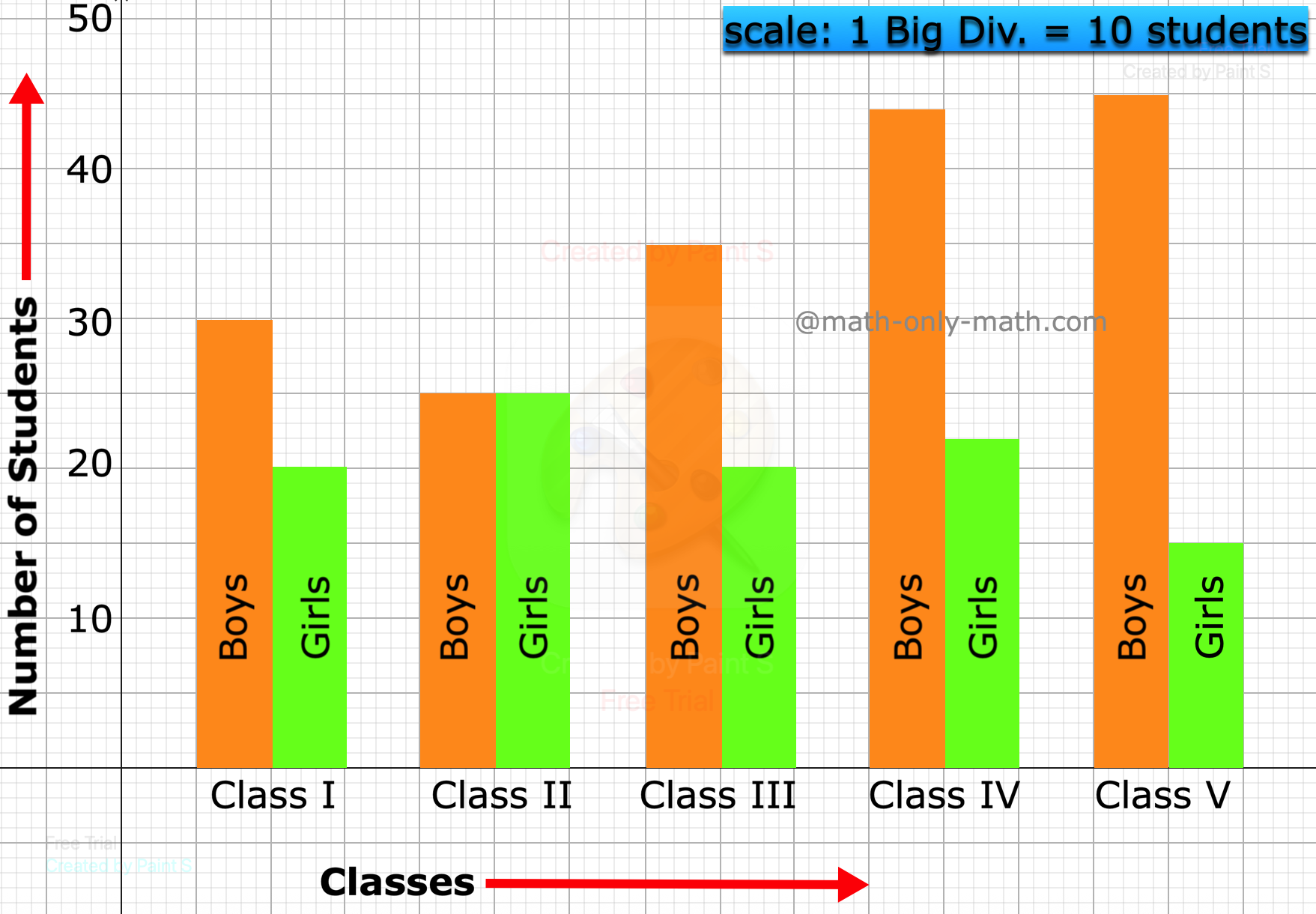
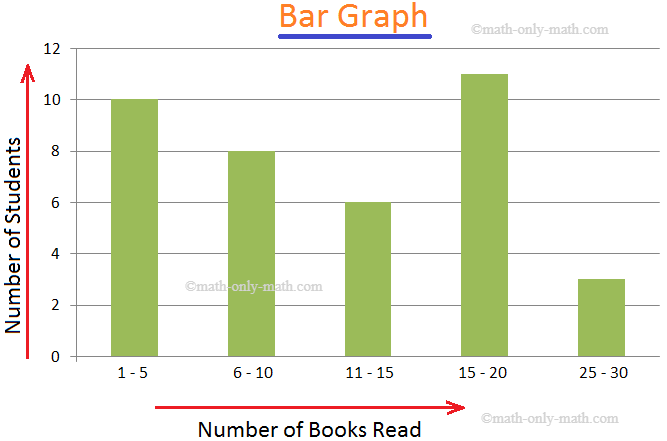
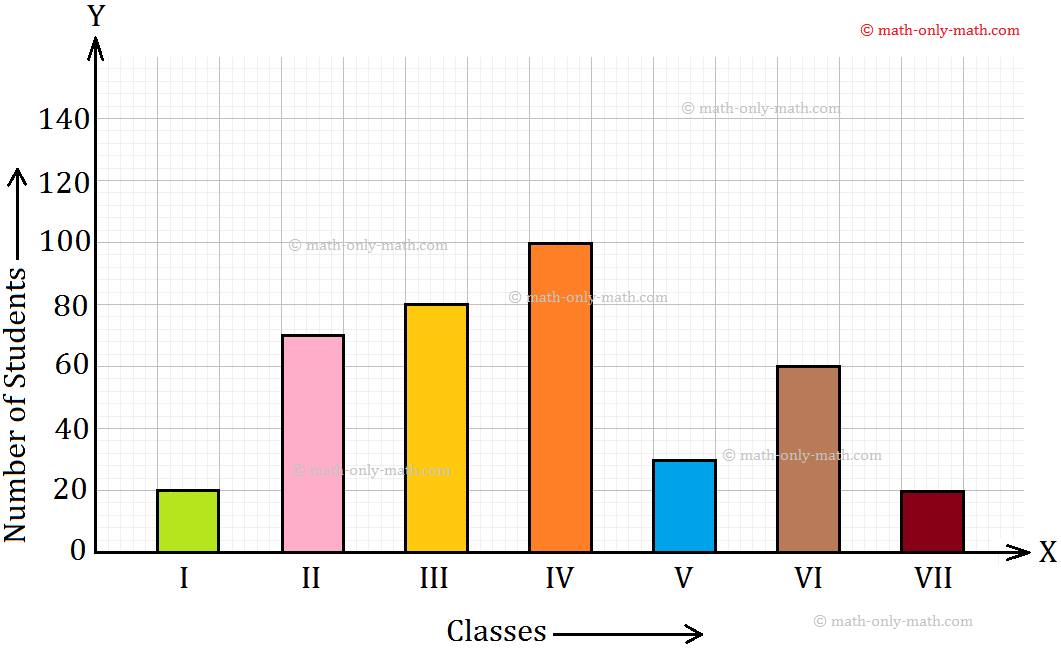
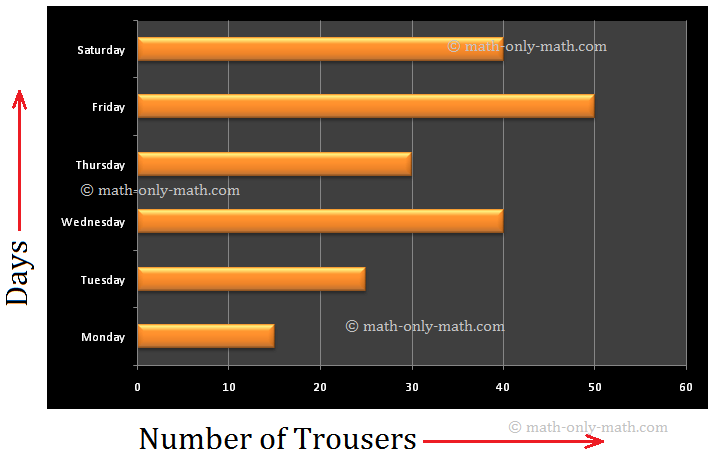
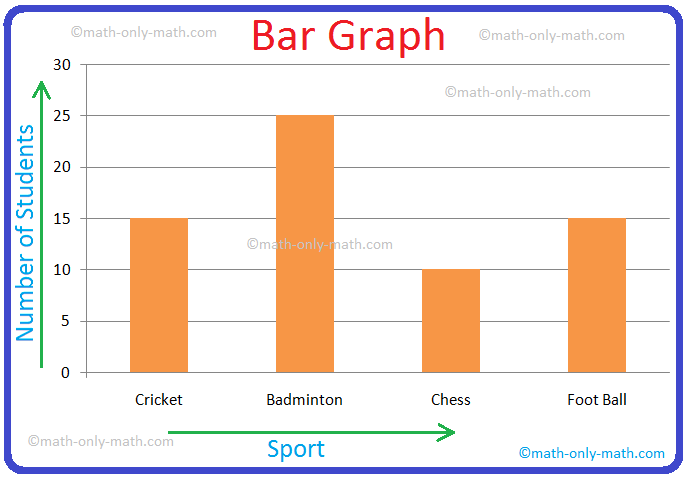
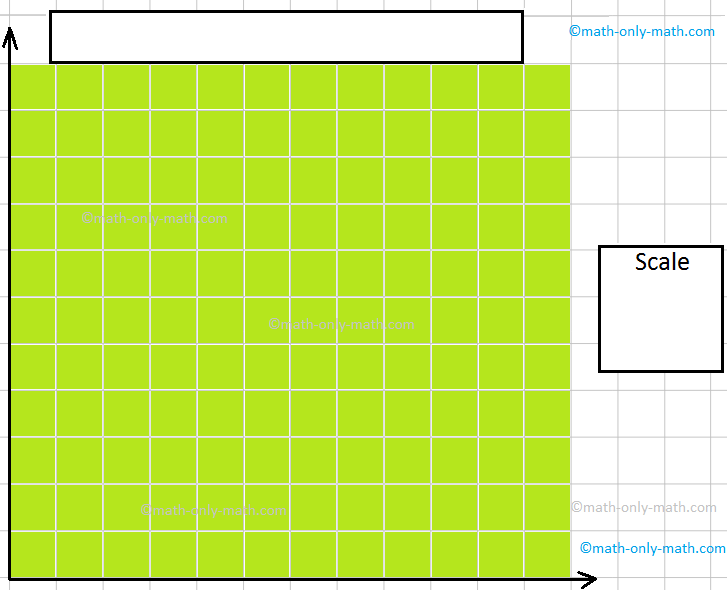
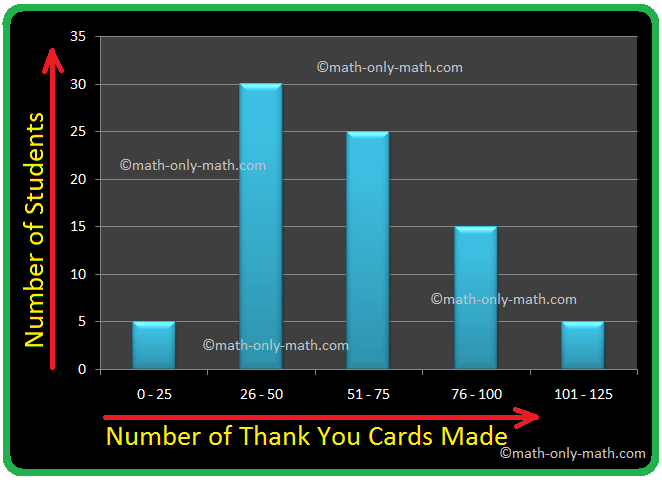
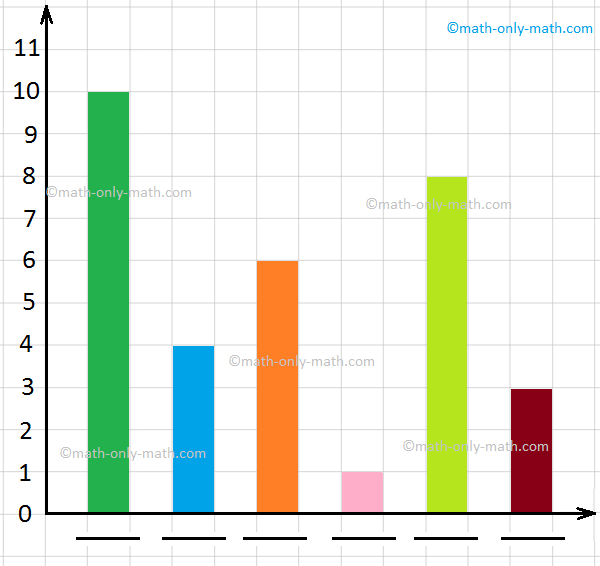
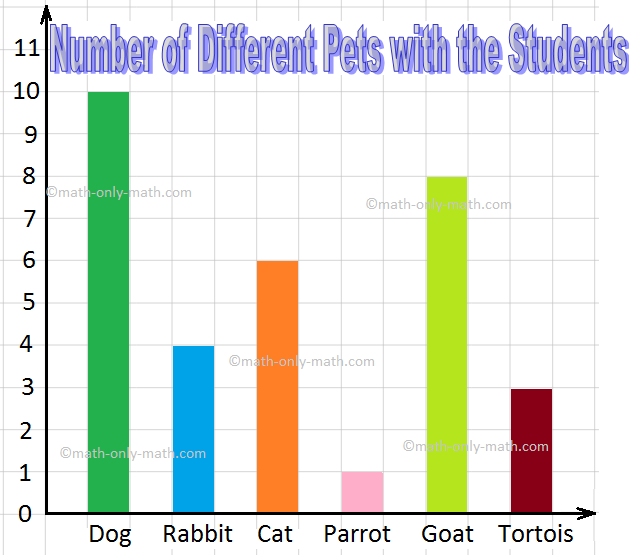
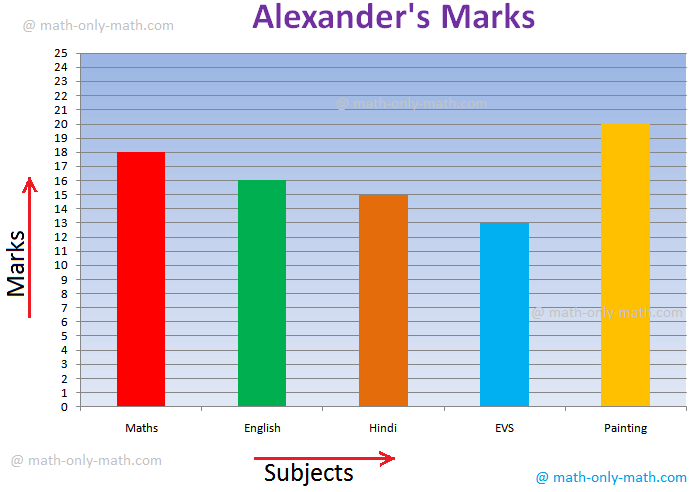


New! Comments
Have your say about what you just read! Leave me a comment in the box below. Ask a Question or Answer a Question.